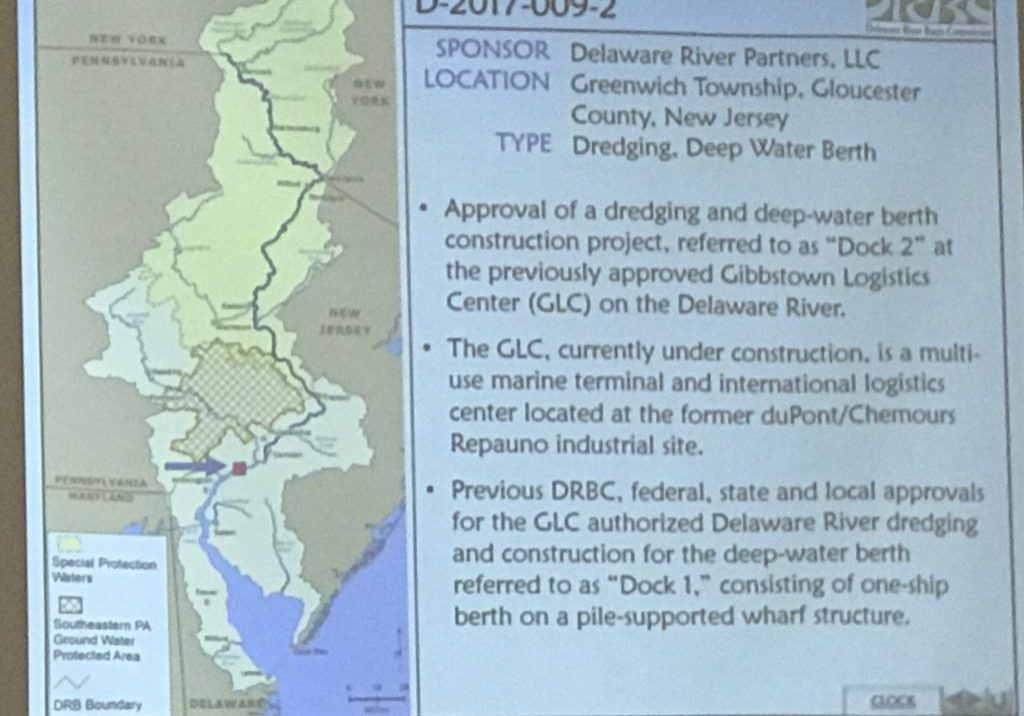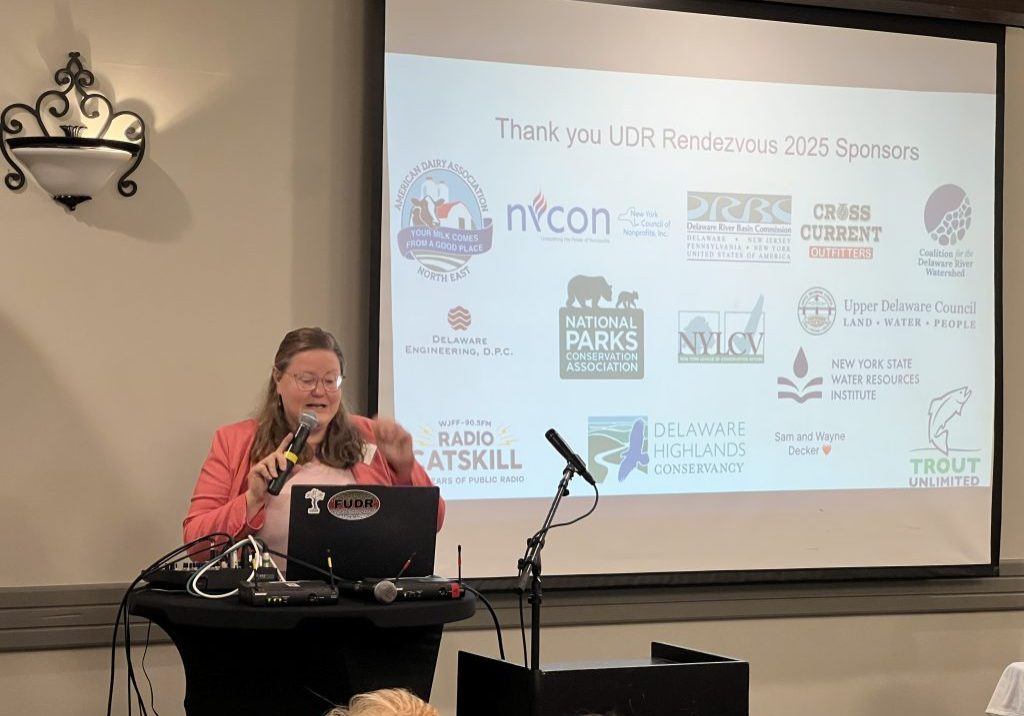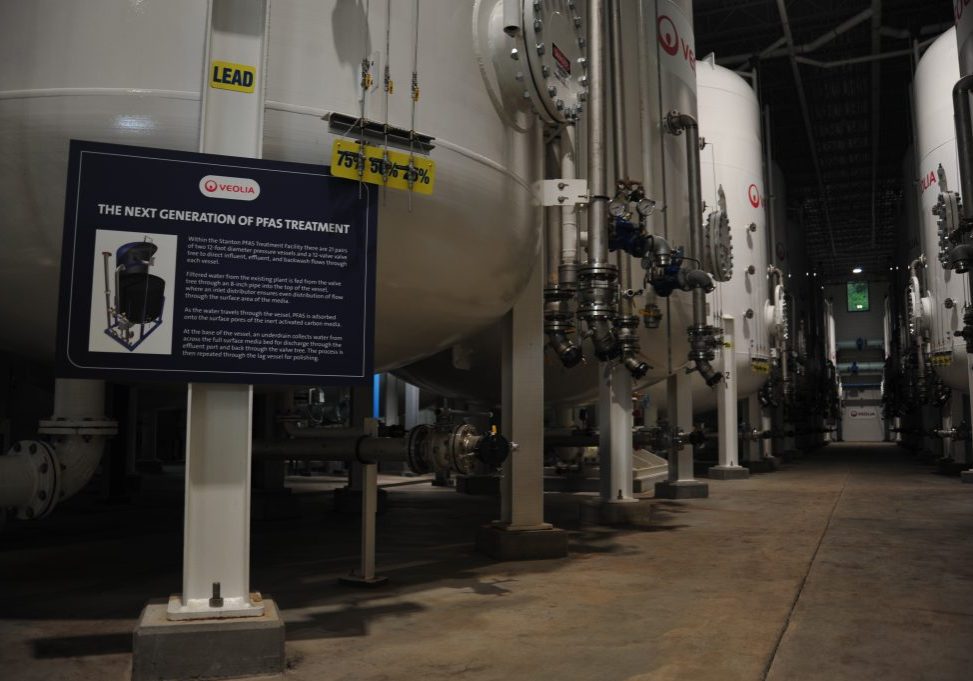
Gibbstown LNG project shows a flicker of life
| May 7, 2024

For our complete coverage of the Wyalusing, Pa./ Gibbstown, N.J. LNG project, please click here.
After repeated setbacks, a controversial proposal to transport liquified natural gas from a plant in Pennsylvania to a port on the Delaware River in New Jersey has shown flickers of life.
Sort of.
Consistent with the history of the proposal, which has been as straight as a corkscrew, it’s not entirely clear what the future holds for the project, which has been criticized as dangerous and harmful to Delaware River watershed communities and perpetuating a reliance on fossil fuels.
What is clear though is that for the first time in years the backers of the project, led by the energy giant New Fortress Energy, have signaled they are not quitting the 7-year-old plan, which has been beset by regulatory, legal and logistical delays.
That disclosure came last week in a pair of filings with the Federal Energy Regulatory Commission in response to the commission asking whether the project sponsors intend to go ahead with their plans.
The answer was yes, but with some caveats.
First, a recap of the proposal
The LNG project would start with fracked natural gas being sent via pipelines from the Marcellus shale region of Pennsylvania to a plant in Wyalusing, Pa., about 50 miles northwest of Scranton.
The plant would liquefy the gas by cooling it to 260 degrees below zero, and then sending it by trucks and/or rail tankers to a port in Gibbstown, N.J., southwest of Philadelphia.
From the port, LNG would be shipped via the Delaware River to overseas markets. The $800 million project would have an average daily production capacity of 3.6 million gallons.
New Fortress, which has reported spending more than $100 million on the plan, has said in previous public filings that it expected the project to be operational in the first quarter of 2022 but that never materialized.
One of the major setbacks the project has faced is the suspension of a rule that would have allowed it to transport LNG by rail, which opponents have derided as “bomb trains.”
Read more: First Responders: Prepared for LNG Emergencies? The Evidence Is Not Reassuring
Reliance on highway vs. rail tankers
New Fortress and its associated companies had petitioned FERC to disavow that it had jurisdiction over the project, a decision that remains pending.
A full-fledged FERC review could mean opportunities for litigation to challenge the quality and thoroughness of various environmental and other reviews – all of which could amount to added time, scrutiny and chances for the project to be delayed or derailed.
FERC on April 18 asked, in light of the project’s current inability to ship LNG by rail, whether the project was still alive.
One of the affiliated companies, Bradford County Real Estate Partners, replied on Friday that the “the design of the facility accounts for non-pipeline modes of transportation that are unimpacted” by the current ban on transporting LNG by rail.
Thus, it said, Bradford County Real Estate Partners “is continuing to pursue the development of the facility accordingly.” And a separate reply from another affiliated company, Delaware River Partners, likewise suggested that the project could rely on highway transportation and therefore the suspension of the LNG-by-rail allowance would not be in play.
In its reply, Delaware River Partners said that the “proposed facilities and LNG transloading operation that are the subject of DRP’s petition remain under consideration by DRP.”
But it added a caveat: “DRP therefore intends to await the requested order from (FERC) before determining whether to construct the proposed facilities and to undertake LNG transloading operations at the Gibbstown facility.”
The “yes, but” answer appears to raise the question of whether the project would go ahead if FERC asserted jurisdiction. The wording seems to raise the prospect that the project might be shelved if the commission ruled against the companies.
However, in its most current regulatory filing, New Fortress said, “We intend to apply for updated permits for the Pennsylvania facility with the aim of obtaining these permits to coincide with the commencement of construction activities.” It did not provide a timetable.
A press representative for New Fortress did not respond to a request for comment.
Highway transportation would be limiting
While it’s possible the project could still rely on highway trucks to transport LNG, the number of such trucks would have to be drastically increased to match the volume that would otherwise be carried by rail tankers.
One rail tanker could roughly carry triple the volume of a single highway truck.
The project called for as many as 400 trucks per day snaking through or near densely populated communities, such as Allentown, Philadelphia, Reading, Scranton and Wilkes-Barre, Pa., and Camden, N.J., and/or for trains of up to 100 specialized tankers to make the trip to Gibbstown.
Read more: LNG From Pennsylvania to New Jersey: 400 Tanker Trucks a Day
Opponents respond to the latest news
Environmental groups that have challenged the project spoke out about the news that its corporate backers intend to move ahead.
“If constructed, the Fortress LNG export project will transport explosive LNG by truck, including through the densely populated, environmental justice communities in eastern Pennsylvania and western New Jersey between Wyalusing, Pa., and Gibbstown, N.J., for export overseas,” the Sierra Club said in a statement. “The Wyalusing liquefaction facility will emit more than a million tons of climate-polluting greenhouse gases and hundreds of tons of toxic air pollutants each year.”
The club’s Beyond Dirty Fuels campaign director, Patrick Grenter, called the decision to go ahead “unnecessary and reckless” and said the club “is prepared to continue fighting this project until it is officially canceled.”
Read our comprehensive coverage of the Gibbstown project
Abigail M. Jones, the vice president of legal and policy at PennFuture, said the plan to make LNG, transport it hundreds of miles and then export it from a Delaware River port is “absurd at best and deadly at worst.”
“Despite continued losses that prove just how unworkable this scheme is, these companies are now doubling down on a plan to deliver highly explosive LNG through some of Pennsylvania’s most vulnerable communities via trucks,” Jones said. “Pennsylvanians will not benefit from this plan. We do not need more fossil fuel development. We need to focus our economic development priorities on the future: clean, renewable energy and green, sustainable industries.”








LNG travels on the railroad daily..this is no different.
Let it roll!